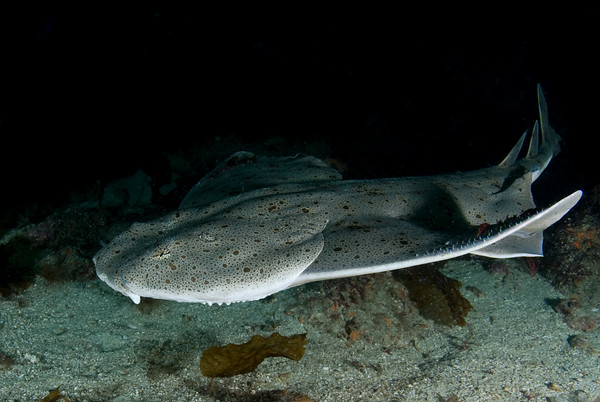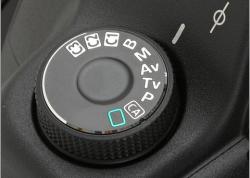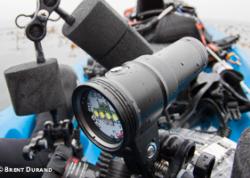Dome Port Optics and Diopters for Wide-Angle Lenses
In this section, I want to discuss how to get good results with rectilinear wide-angle lenses, which means any wide-angle lens that is not a fisheye lens. Many people have had difficulty in this area. I’ll start off with a discussion on diopters, dome port optics, and the virtual image.
Diopters & Dome Port Optics
The Virtual Image
The first concept that I want to explain is the virtual image.
A lens behind a dome port does not focus on the subject, like it does on land; it focuses on a “virtual image” that usually lies 9-12 inches in front of the port, depending on the port size. The larger the dome port, the further away the virtual image is. If you need help understanding the virtual image concept, there is a tutorial at the bottom of this page.
One rule of thumb says the image of an object that is far away will lie approximately 1.5 times the dome diameter (or 3 times the radius) away from the dome port. (Source: scubageek). Objects that are closer than infinity (e.g. - not very far away) will have a virtual image that is closer to the dome port than 1.5x the dome diameter.
Manual focus and the hyperfocal distance
Because of the "virtual image", don't manually set the focus of your wide-angle lens on the surface to the hyperfocal distance, like you would for a landscape photograph. To shoot in manual focus underwater, focus on an object that is 3ft away once you are underwater, switch to manual focus, and then change your f-stop (set a small enough aperture) until objects far away have acceptable focus. If you need to pre-focus above water, set the focus on an object 1ft away from the dome port. These distances are approximate, and should be tested with your setup.
When is a diopter needed with your wide-angle lens?
Lenses that don't focus close, like the nikon 12-24mm, or nikon 17-35mm will require a diopter when used behind a dome port, to enable the lens to focus on the “virtual image”. Many beginners attempt to use wide-angle lenses without diopters, and then wonder why the edges are blurry. These lenses will generally work better behind larger dome ports.
Some lenses will still work without a diopter, but will have better sharpness with the diopter, although you can no longer focus to infinity. In fact, most rectilinear wide-angle lenses will benefit from a diopter. With a +2 diopter, which is not a strong diopter, you will still have a good enough range of focus. The Canon 17-40mm and 16-35mm lenses fall into this category.
Lenses that focus ten inches away or closer like the Sigma 10-20mm or Nikon 10-24mm generally don't need a diopter, especially when using an 8-inch dome port or larger.
Diopters are commonly called close up lenses. The housing manufacturer or housing dealer can usually recommend the proper extension/diopter combination for your dome port and lens. Usually a +2,+3, or +4 diopter is recommended. “+2” refers to the strength of the diopter, with +4 being stronger than +2. A +4 diopter is the strength most often recommended with a wide-angle lens that does not focus within 12 inches of the dome port.
Some people say you should avoid Tiffen diopters, and get a Hoya, or even better, a B&W diopter. The B&W diopters are highly rated. Search for “close up” and lens when looking for diopters on line. Fisheye lenses generally do not take or need diopters.
In Summary: Dome Port Optics Facts
The further away the close-focusing distance is for a lens, the greater need it will have for a diopter
The smaller the dome, the greater the need for a diopter, because the "virtual image" lies closer to the dome. Note that domes of similar size can have different amounts of "curvature" which can also affect performance and corner sharpness.
Many wide-angle lenses will perform well in large "super-domes" that are 9 inches wide, even without diopters.
Some lenses that already focus very close can even work in small dome ports, which are less expensive, lighter, have less drag, and can make shots taken on the bottom easier.
Getting good wide-angle results
When using a wide-angle lenses, especially rectilinear lens, such as the Nikon 12-24mm or Canon 10-22mm lens, care must be taken to get optimal results. By optimal results, I mean acceptable sharpness in the corners of your image.
For the best results:
Align the base of dome port with the 1st (most outer) element of the lens by using the appropriate extension ring. However, its not always easy to tell where the lens elements are. Check with your housing manufacturer for the best alignment.
You can use ports made out of optical glass or acrylic. Optical glass is more expensive, but much more scratch resistant than acrylic, and water falls off it much easier if you are doing over-under shots. Some people think image quality & contrast may be improved with a glass port, while others feel that the difference is not noticeable.
Use an 8-10 inch dome port if you are using a rectilinear lens. I have not seen a significant difference between small and large dome ports with fisheye lenses.
Performance is often best at smaller apertures, and some people stop down to at least F8 or smaller with some lenses. Use a higher ISO, for example ISO 400, if necessary to use these small apertures.
Many rectilinear lenses will have improved performance with a +2 or +4 diopter. Fisheye lenses do not benefit from a diopter. If your wide-angle lens has a fairly close minimum focusing distance, and your dome port is large enough, you probably will not need a diopter.
Test various port extension / diopter combinations in the pool to find out the best combination for your housing & lens combination, or discuss this with your underwater housing dealer or shop or housing manufacturer.
If you are using a compact camera - e.g. a Canon G12 or S95, you will probably have to use macro mode with a dome port or your photos will be out of focus, because the virtual image lies close to the dome port.

Angel shark photo taken with my tokina 10-17mm fisheye lens at 14mm, acrylic S&S 6 inch dome port. F13, 1/160th, ISO 160, strobes out wide. I shot at F13 to ensure a sharp photo in the corners and rear of the fish. The shark was very close to me, maybe 2ft away.
Glass dome ports versus Acrylic
Glass ports are heavier, cost more but are more resistant to scratches.
Because glass dome ports are heavier, some underwater photographers like the effect it has on the underwater buoyancy of their setup - meaning the port won't "float up". However, it depends on the housing.
It is possible to "mesh out" minor scratches in acrylic ports. Read how to remove the scratches on the underwater housing maintenance page.
Glass ports can supposedly shed water easier for over-under shots.
Some people believe a high-quality well built glass port will have better optics. In my pool tests between a Sea & Sea 6 inch glass and acrylic ports, I could not tell any difference in sharpness, color or contrast. Of course these test results are valid only for these ports in the conditions I tested them in. Here are the dome port pool test results.
Small dome ports versus larger dome ports
Larger dome ports will usually be heavier and more expensive.
It's much easier to take CFWA photographs with smaller ports.
At wider apertures (larger F-stops), corners will be sharper in a larger dome port. However, this difference can be small with fisheye lenses. See my sea & sea dome port tests.
There are some differences with over-under shots.
Wide Angle Conversion Ports - Nauticam WACP
Wide Angle conversion ports are newer ports developed by Nauticam that are a combination between a lens and a port. These conversion ports have lens elements on the front, but they are also a port in that they house the lens and provide water tightness to the system. Known as Nauticam WACP for short, they are not wet wide angle lenses.
Wide angle conversion ports are the best option if you want the best underwater wide angle optics available with a rectilinear wide angle lens. These ports are capable of producing some of the widest rectilinear wide angle fields of view possible. Wide angle conversion ports also allow for "through the lens focusing" and water contact optics. This means the lens is actually focusing on the subjects in the water rather than the virtual image. This results in sharp corners, even with a rectilinear lens underwater. However, all of these benefits come at a price. Wide angle conversion ports are some of the most expensive wide angle options on the market.
The two available wide angle conversion ports currently are the Nauticam WACP-1 and the Nauticam WACP-2. The WACP-1 is designed for 28mm equivalent lenses and can produce a 130 degree field of view. The WACP-2 is designed for 14 mm equivalent lenses (and closer) and can produce a 140 degree field of view - the widest field of view possible from a rectilinear wide angle lens.
Further Reading
Please see the composition section for more info on wide-angle photography. (Ambient light and silhouetes underwater, CFWA, wreck photography), or read the wide-angle interview.
For strobe positioning, see the strobe position section.
For camera settings, see the macro and wide-angle settings section.
For lens selection, read about the best underwater lenses
There’s also some excellent reading on dome port optics here: http://scubageek.com and some additional reading on Paul Kay's site here.
Aligning your lens in the dome port - one further point
I'm going to emphasize this again, because it comes up over and over. When you use a fisheye or rectilinear wide angle lens in a dome port, people seem concerned with whether it fits, or vignettes at all. Both of these are important, (having a lens hit the inside of your dome port is not fun), but you must also realize that getting the correct port extension is also important, even with fisheye lenses. Don't always think everything is ok just because the lens fits in the port.
In zoom lenses, the optimal location of the dome port often changes as the lens zooms in and out, so people often optimize for the lens at its widest setting.
Virtual Image Tutorial
The virtual image concept can be hard to grasp. Basically, underwater the camera "sees" the image much closer than it really is, because of the optics of the dome port in water. Your camera auto-focus will still work correctly - it is just focusing on this "fake" image (but real to your camera sensor) closer than you think. You will notice this if (1) - you manaully focus your wide-angle lens to an image 5ft away topside, leave in in manual focus, and then go underwater. A photo of something 5ft away will then be blurry, because the virtual image underwater is much closer than 5ft. This is why you should never pre-focus a wide-angle lens on land that you are going to use underwater.
Or (2) you use a wide-angle lens underwater that does not have close-focus capability. Your shots will be a little blurry, and a diopter will be needed with this lens.
I hope this helps! Please ask if you have more questions.

RECOMMENDED ARTICLES
SUPPORT THE UNDERWATER PHOTOGRAPHY GUIDE:
The Best Service & Prices on u/w Photo Gear
 Visit Bluewater Photo & Video for all your underwater photography and video gear. Click, or call the team at (310) 633-5052 for expert advice!
Visit Bluewater Photo & Video for all your underwater photography and video gear. Click, or call the team at (310) 633-5052 for expert advice!
The Best Pricing, Service & Expert Advice to Book your Dive Trips
 Bluewater Travel is your full-service scuba travel agency. Let our expert advisers plan and book your next dive vacation. Run by divers, for divers.
Bluewater Travel is your full-service scuba travel agency. Let our expert advisers plan and book your next dive vacation. Run by divers, for divers.































